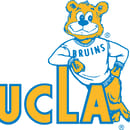Here’s a little backstory on Halloween…
Halloween was not always a night of fun and games, partying, trick-or-treating and crazy costumes. It traces its roots back to a 2,000 year-old festival called Samhain (November 1), the new year celebration of the Celtic peoples of Europe. Samhain Eve (October 31) was a night where spirits (along with other mythical creatures) were believed to roam the earth on their journey to the afterlife. In order to avoid possession by these free spirits, the Celts would dress up in animal skins, blacken their faces or wear masks (to mimic the deceased) to confuse the spirits. They also gathered around bonfires, offered up animal sacrifices to the gods and went door-to-door asking for food and drinks. Read more about Samhain here!
All Saint’s Day
The celebration of Samhain was soon transformed by Pope Boniface IV into All Saint’s Day or All Hallows’ Day. This special day honors and celebrates the lives of the Christian saints throughout history. It is marked by daily masses, church processions and other communal events. Christians take this time to reflect on their connection with the past saints and the inspiration the saints spark to follow in their footsteps.
However, the night before All Saint’s Day (October 31) continued to be observed by the Europeans but under a new name: All Hallows’ Eve which later transformed to Halloween.
Halloween in America
Halloween was brought to the U.S. by European immigrants in the 1800s, but its commercialization didn’t begin until the 1900s. Costumes gained popularity by the 1930s and the act of trick-or-treating was established in the 1950s. This holiday is now celebrated all over the U.S. by people of all backgrounds and ages. It’s a time for indulging in sweets, watching scary movies, getting creative with costumes and just having fun with friends, family and strangers.
Although Halloween and All Saint’s Day are very popular in the West, they are not the only holidays being celebrated around this time of year.
Diwali
Diwali, which is celebrated worldwide (predominantly in India) by people of various faiths, is known as the “festival of lights” and honors Lakshmi, the Hindu goddess of wealth. Its main theme is the triumph of light over darkness, good over evil and the blessings of freedom, victory and enlightenment.
It is a five-day celebration that happens every fall during the Hindu month of Kartik, which begins around mid-October and ends around mid-November. However, the exact day that the festival culminates varies from year to year because it falls on the darkest day of the lunar month, which is the day of the new moon. This year, Diwali is going to be celebrated worldwide on October 27.
Since Diwali takes place on a day where the sky is at its darkest, one of the main themes incorporated into the celebration is light. People light candles, oil lanterns or diyas (clay lamps) and place them in various locations, such as throughout their homes, in areas of worship, in the streets and over bodies of water. Some even set off fireworks as a way to ward off evil spirits. Decorations include rangoli, which are intricate designs composed of flowers, rice or sand.
Diwali also centers around family. This is a night of coming together with traditional food (including sweets), new clothing (bought especially for this time) and grand displays of light.
Read more about Diwali here https://www.nationalgeographic.com/search?q=diwali and here https://www.almanac.com/content/diwali.
Día de los Muertos
Día de los Muertos, or Day of the Dead, is a celebration of life and death, which originated in Mexico but is now celebrated all throughout Latin America beginning on October 21 and ending on November 2. This holiday bridges the gap between the living and the dead, as people remember and honor their deceased family members. This union is brought to fruition through the ofrendas (altars) used as a means to welcome and guide spirits back to the realm of the living. The ofrendas are decorated with marigolds, food, water (and other drinks), papel picado (pierced paper), candles, family photos and other objects of the deceased.
One of the biggest displays during this celebration is the costumes. People young and old dress up as calacas (skeletons) with suits and fancy dresses and artfully paint their faces to mimic calaveras (skulls). People also indulge in traditional food including pan de muerto (bread of the dead), which is a type of sweet bread, and beverages like atole (a thin warm porridge), pulque (sweet fermented drink made from agave sap) and hot chocolate. The entire day is filled with parades, food, live music and other cultural events.
Read more about Día de los Muertos here: https://www.nationalgeographic.com/travel/destinations/north-america/mexico/top-ten-day-of-dead-mexico/
These are only a few of the vast amount of cultural celebrations that take place around the same time as Halloween. Our world is filled with so many diverse cultures, all with their own traditions and festivals to celebrate aspects of our humanity, especially that of life and death and good and evil.



